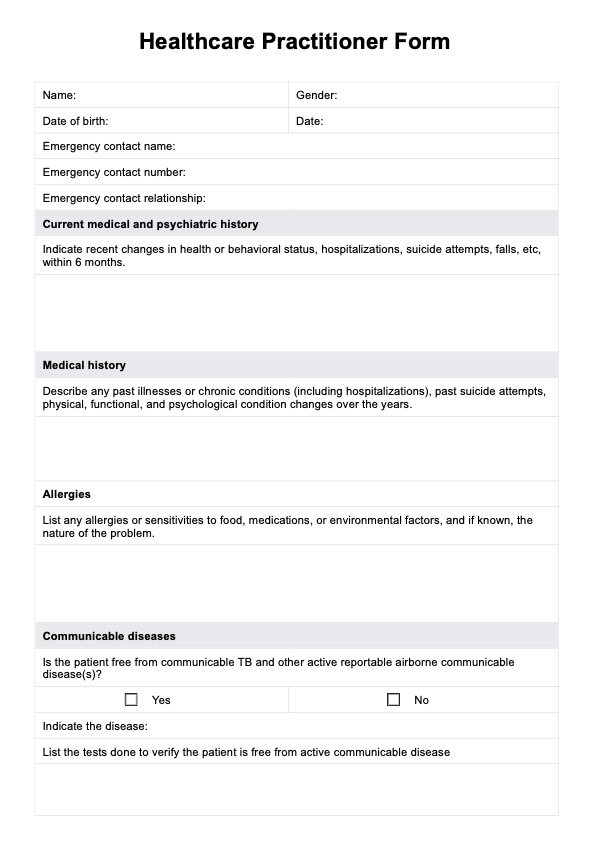Healthcare professionals use a practitioner assessment form to document patient information, diagnoses, treatment plans, and consent, ensuring accurate care and communication.

Healthcare Practitioner Form
Download a free Healthcare Practitioner Form template and an example to streamline clinical assessment and documentation.
Healthcare Practitioner Form Template
Commonly asked questions
A qualified medical professional, such as a primary physician, certified nurse practitioner, registered nurse, or physician assistant, can complete the form.
The time it takes to fill out the Healthcare Practitioner Form is subjective to each patient, depending on the patient's medical history and the level of detail required. Typically, it takes approximately 10-15 minutes for practitioners to input comprehensive information, ensuring a thorough and accurate assessment.
EHR and practice management software
Get started for free
*No credit card required
Free
$0/usd
Unlimited clients
Telehealth
1GB of storage
Client portal text
Automated billing and online payments











